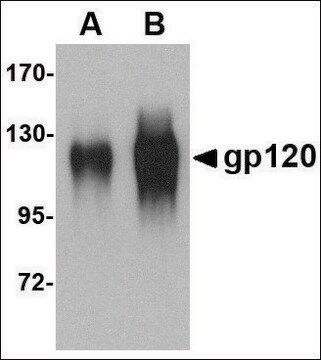SAE0071
HIV-1 GP120 protein
recombinant, expressed in HEK 293 cells
Synonym(s):
Glycoprotein 120 (gp120), Surface protein gp120
About This Item
Recommended Products
recombinant
expressed in HEK 293 cells
Quality Level
description
low endotoxin
assay
≥95% (SDS-PAGE)
form
lyophilized powder
mol wt
calculated mol wt 55 kDa (The protein migrates as a 100-130 kDa protein on SDS-PAGE due to glycosylation)
impurities
≤1 EU/μg protein endotoxin
UniProt accession no.
storage temp.
−20°C
General description
Biochem/physiol Actions
Physical form
Storage Class
11 - Combustible Solids
wgk_germany
WGK 2
flash_point_f
Not applicable
flash_point_c
Not applicable
Certificates of Analysis (COA)
Search for Certificates of Analysis (COA) by entering the products Lot/Batch Number. Lot and Batch Numbers can be found on a product’s label following the words ‘Lot’ or ‘Batch’.
Already Own This Product?
Find documentation for the products that you have recently purchased in the Document Library.
Our team of scientists has experience in all areas of research including Life Science, Material Science, Chemical Synthesis, Chromatography, Analytical and many others.
Contact Technical Service





